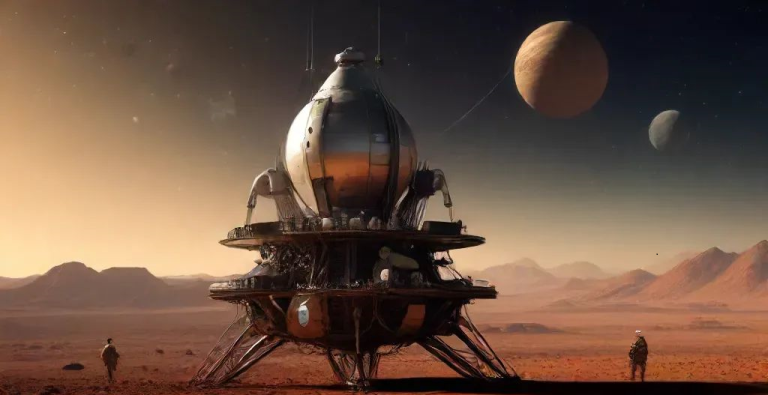
Scientific breakthroughs, technical advancements, and human accomplishments have all been propelled by the enduring fascination with space travel. Recent years have seen tremendous growth in the aerospace sector thanks to breakthroughs in rocketry, spacecraft design, and lunar research, which has opened the door to hitherto unimaginable opportunities for discovery and exploration beyond Earth’s orbit. Rocket propulsion, spaceship architecture, and lunar missions are some of the areas that have recently seen significant improvements in space exploration technology, which are discussed in this article.
ADVANCEMENTS IN ROCKETRY:
As the principal means of launching satellites, cargo, and personnel into orbit, rocketry is fundamental to space exploration. More efficient and cheaper access to space has been made possible by recent breakthroughs in rocket propulsion technology, which have shook up the aerospace sector.
Reusable Rocket Technology:
Rocket Lab, SpaceX, and Blue Origin were among the first to develop reusable rocket technology, which allows rocket stages to be collected and repaired for successive flights. By removing the need to construct new rockets for every launch, reusable technology greatly lowers the cost of space missions, making space more accessible and economically feasible.
Advancements in Propulsion Systems:
Compared to conventional chemical rockets, modern propulsion technologies including electric propulsion, ion engines, and methane-powered engines are more efficient and produce better results. Missions may now last longer, carry more payload, and be more adaptable thanks to these cutting-edge propulsion systems.
SPACECRAFT DESIGN AND INNOVATION:
When it comes to launching satellites, conducting scientific investigations, and sending humans on space missions, spacecraft design is paramount. Spacecraft have become smaller, lighter, and more competent than ever before thanks to advancements in materials science, downsizing, and autonomous systems.
CubeSats and SmallSat Constellations:
Through its affordable platform for scientific study, Earth observation, and communications, CubeSats have democratized access to space. CubeSats are small spacecraft with specified dimensions. Applications including weather monitoring, marine surveillance, and internet access might benefit from the increased coverage and capabilities offered by SmallSat constellations, which are made up of numerous CubeSats operating in tandem.
Autonomous Navigation and Guidance:
Spacecraft are able to move and maneuver in space without any human involvement thanks to autonomous navigation and guiding technologies. Autonomously docking with space stations, conducting precise movements for scientific studies, and landing missions are all within the capabilities of these high-tech devices, which include sensors, cameras, and artificial intelligence algorithms.
LUNAR EXPLORATION:
The Moon has once again emerged as a focal point for space exploration, with renewed interest from space agencies and commercial entities seeking to establish a sustainable human presence on its surface.
Artemis Program:
Returning humans to the Moon by the mid-2020s is the target of NASA’s Artemis program. The program’s overarching objective is to build a habitable lunar base and conduct scientific research in preparation for future crewed flights to Mars. The Orion spacecraft and the Space Launch System (SLS) rocket will be utilized by the Artemis program to carry out the transportation of people to lunar orbit and the lunar surface.
Commercial Lunar Missions:
To make the most of the Moon’s resources and scientific possibilities, several private enterprises are embarking on lunar exploration missions alongside government-led endeavors. Lunar landers and rovers are being developed by companies such as Astrobotic, Blue Origin, and SpaceX to facilitate research, deliver payloads, and assist future human journeys to the Moon.
CONCLUSION:
Advancements in rocketry, spacecraft design, and lunar exploration are driving a new era of space exploration and discovery. From reusable rocket technology and advanced propulsion systems to CubeSats and autonomous spacecraft, the aerospace industry is pushing the boundaries of what is possible in space. As we look to the future, continued innovation and collaboration among governments, commercial entities, and research institutions will pave the way for humanity’s continued exploration and expansion into the cosmos.